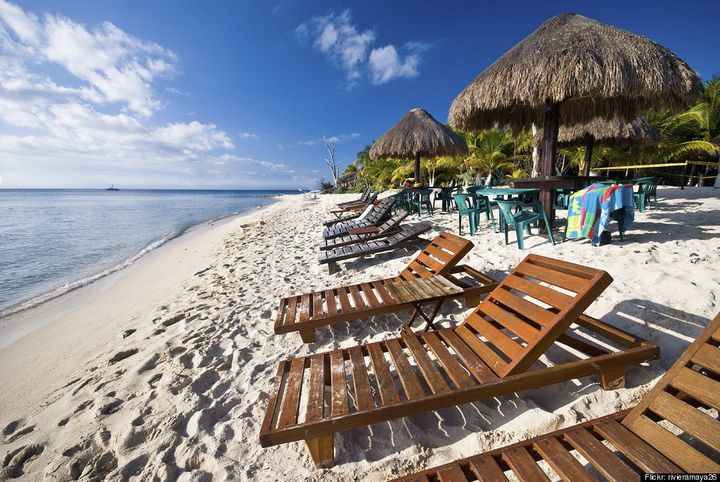
Lol-be had just turned 12, and it was time for her "sacred journey" -- a ritual pilgrimage required of all Maya women at least once in their lifetime. It meant a long, arduous trip to the shrine of the fertility goddess Ixchel on the island of Cuzamil.
She began the trip by walking for the better part of a day from her village in Guatemala to the closest Caribbean seaport, where she traded a handful of precious cacao beans for a 300-mile ride in a dugout canoe up the coast to the mid-Yucatan port of Polé. There, she handed over more beans to join other pilgrims for a six-hour canoe trip across the channel to Cuzamil.
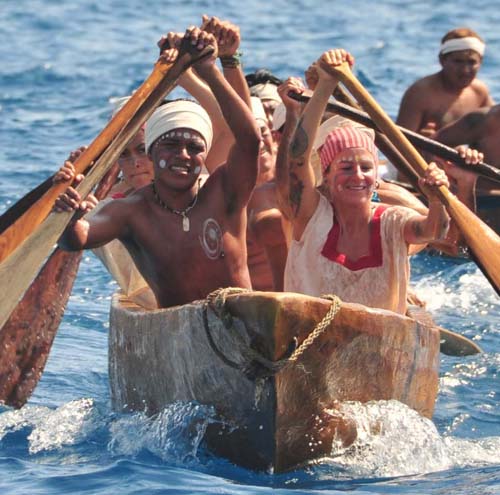
On the island, the women walked a few miles inland to the purification huts and ceremonial temples of Ixchel where they prayed for a fruitful marriage and healthy children. Many left offerings of little straw dolls.
The traditional pilgrimages went on for 700 years and must have been made by millions of women and often family members from across the Maya empire. Lol-be (her name translates to "flower of the road") might have been escorted by her mother Lol-há ("flower of the water"), who years earlier might have made the same trip with her mother.
Local historian Carlos Serrano says the pilgrims typically traveled in groups from the same village. Many walked to Polé for hundreds of miles on white stone "sacbe" highways criss-crossing eastern Mexico's Yucatan Peninsula. Like Lol-be, others arrived in large canoes from Maya ports down the Caribbean shores as far away as Honduras.
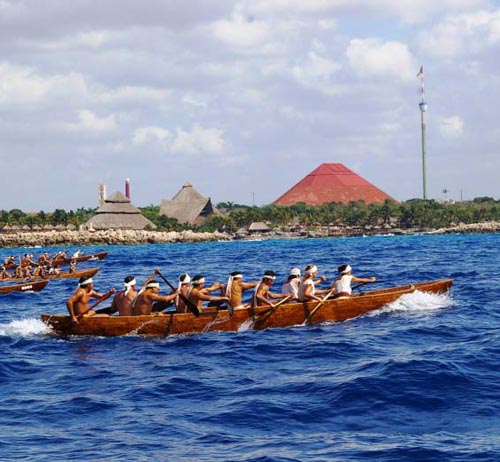
The long journeys ended in 1519 when Hernan Cortes and his army showed up on Cozumel (as the Spanish called the island) to begin the conquest of Mexico. Besides being a quick sail from the conquistadores' home port in Cuba, Cortes had set his sights on Cozumel because he'd heard there was lots of gold on the island. There wasn't, and a week later -- after destroying most of Ixchel's temples -- the bearded strangers packed up and sailed away, eventually to start the invasion on the central Mexican beaches of Veracruz.
From canoes to cruise liners
Fast forward to today, and millions of visitors are again coming to Cozumel -- on jetliners, cruise ships and 600-passenger cross-channel ferries from the ancient Maya port of Xaman-Ha, now called Playa del Carmen.
Besides underwater sightseeing on Cozumel's world-famous reefs and tanning up on powdery white beaches around the island, tourists can hop into jeeps for a short ride inland to explore the two-square-mile sanctuary of Ixchel at San Jervasio. Chances are, few are aware that their jeep caravans are bouncing along a paved road covering the centuries-old footsteps of the Mayan pilgrims.
Not all of the visitors to San Jervasio are there just to look around. "Even today," notes Cozumel historian Velio Vivas, "we still find little straw figures and other offerings at the ruins of Ixchel's shrines."
Trailing Lol-be
On the mainland, Lol-be's 300-mile canoe ride up the coast from Guatemala would have first taken her past what are now the fast-growing luxury resorts of Belize, and after that along the 70 or so miles of pristine beaches of Mexico's new Costa Maya development. Next, the paddlers would have skirted the now-protected flora and fauna of the immense Sian Ka'an Biosphere Reserve -- a sort of tropical version of the Florida Everglades -- before taking a break at the big Maya trading port (and now the big tourism attraction) at Tulum.
From Tulum, the final stretch of the trip was along the lower half of today's booming, 70-mile-long Riviera Maya resort strip. The canoe would have zipped by such major Maya ports as Akumal and Xel-Ha (today, you'll find both brimming over with tourists) before coming ashore at Polé (now the popular eco-archaeological theme park of Xcaret).

Put Lol-be in a time capsule, blast her off to today's Riviera Maya, and chances are you'll find her in a long, white dress at the annual Travesia Sagrada Maya -- a three-part re-creation of the sacred journey to Cozumel. It starts at nightfall at an inlet at Xcaret where an outdoor stadium is packed by thousands of spectators. Onstage, dozens of performers in traditional Maya garb kick the evening off with seductive dances to the beating of goatskin drums, tooting flutes and tuba-like blasts from conch horns.
After a couple hours of traditional prancing and priestly incantations, the show wraps up with the blessing of 300 canoe paddlers from seven villages selected to compete in the events of the next two days.
The second part of the ceremony comes at the crack of dawn the next morning when 30 canoes head off to Cozumel from the same spot at Xcaret. The race is on ... they're expected to reach the island in four to seven hours depending on the weather.
The third and final part of the ceremony -- the return of the canoes -- takes place the next day at the nearby resort town of Playa del Carmen, home to nearly 100 posh hotels and some half-million people. Many are jamming the beach as scores of dancers and musicians in pre-Hispanic costumes and almost that many officials get ready for festivities honoring the paddlers.
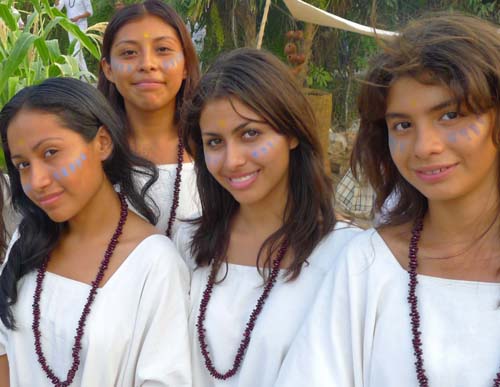
The first canoes pop up on the horizon around noon. Soon, the rest appear, and as the oarsmen beach their canoes they are rewarded with fruit baskets, cheers from the crowd and congratulatory speeches by the officials.
Lol-be and the millions of women who braved the hardships of their pilgrimages to Cozumel to pray at the shrine of Ixchel have once again been remembered.
Next summer, the ceremony is expected to draw nearly twice as many people.
Getting and staying there: Visitors to the Riviera Maya typically fly to Cancun International Airport serving both Cancun at the northern end of the Yucatan Peninsula and the Riviera. Stretching from Cancun down the coast to Tulum, the 70-mile-long Riviera offers 382 hotels with a total of 38,000 rooms, mostly overlooking the blue-green waters of the Caribbean.
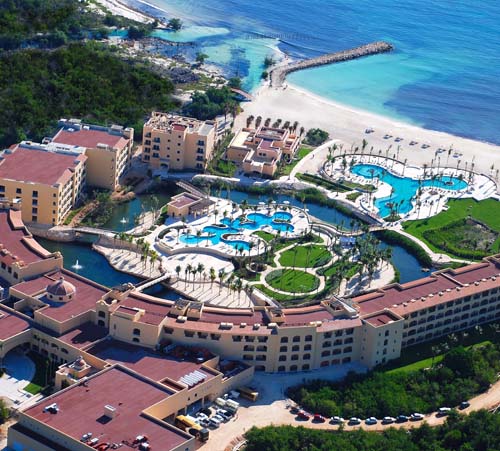
Among popular properties on the Riviera is the 273-suite, all-inclusive Hacienda Tres Rios (www.haciendatresrios.com) near Playa del Carmen.
More info: Visit www.rivieramaya.com
Photo credits: Riviera Maya Destination Marketing Office (Images 1 and 2), Bob Schulman (Images 3 and 4), Hacienda Tres Rios (Image 5).